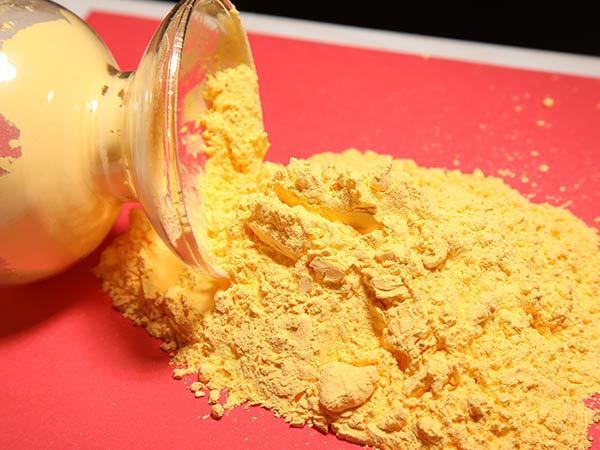language
English
العربية
বাংলাদেশ
Български
Hrvatski
Česky
Dansk
Nederland
 Esperanto
Esperanto
Slovenski
Filipino
Suomi
Français
Maori
 Shqiptare
Shqiptare
Georgian
 Euskara
Euskara
Deutsch
Ελλάδα
ישראל
इंडिया
Magyarország
Ísland
Indonesia
Irlanda
Italia
日本語
Sovensko
Հայաստան
한국
Kyrgyz
ປະເທດລາວ
 Zulu
Zulu
Latvian
Lithuanian
Luxembourgish
 Latinus
Latinus
Macedonian
Малайская
Maltese
Монгол улс
 Cymraeg
Cymraeg
ဗမာ
 தமிழ்
தமிழ்
नेपाल
Norge
ایران
Polska
Portugal
România
Российская
Србија
 Slovak
Slovak
Србија
 Slovak
Slovak
Bosanski
Slovenian
Беларус
España
Sverige
Точик
ประเทศไทย
Türk
Azərbaycan
Uzbek
 Afrikaans
Afrikaans
Việt Nam
Achieve High-Fidelity Reproduction of Wood Grain in WPC Flooring with NC Foaming Agent
Release time: 2025-02-03
Achieve High-Fidelity Reproduction of Wood Grain in WPC Flooring with NC Foaming Agent
Introduction to WPC Flooring and Its Aesthetic Appeal
Wood-Plastic Composite (WPC) flooring has rapidly gained popularity in both residential and commercial settings. Combining the best of wood and plastic, WPC offers durability, moisture resistance, and a stunning appearance. The key to its appeal lies in the **high-fidelity reproduction of wood grain**, which mimics the natural beauty of hardwood while providing superior performance.
The advancement in technology has led to the development of various additives that enhance the visual and physical characteristics of WPC. Among these, the **NC foaming agent** stands out as an innovative solution that elevates wood grain replication to new heights. This article delves into how NC foaming agents work and the benefits they bring to WPC flooring manufacturing.
Understanding NC Foaming Agents
What are NC Foaming Agents?
NC foaming agents, or **Nitrocellulose-based foaming agents**, are chemical compounds used to create a foam structure during the production of WPC. The unique properties of nitrocellulose allow for the creation of a stable and uniform foam, which is crucial for achieving the desired aesthetic effects in WPC flooring.
The Mechanism of Action
The process begins with the incorporation of NC foaming agents into a polymer blend. When heated, these agents decompose to release gas, forming bubbles within the matrix of the composite material. This foaming action creates a lightweight structure with enhanced insulation properties, while also allowing for intricate designs that replicate wood grain patterns.
Key Benefits of Using NC Foaming Agents
1. **Enhanced Aesthetic Quality**: NC foaming agents facilitate the production of intricate wood grain patterns that closely resemble natural wood.
2. **Improved Mechanical Properties**: The foaming process reduces weight without compromising strength, making WPC flooring easier to handle and install.
3. **Increased Thermal Insulation**: The foam structure traps air, providing better thermal insulation compared to traditional flooring materials.
4. **Eco-Friendly Production**: With the right formulations, NC foaming agents allow for a more sustainable approach to flooring, utilizing less plastic and reducing waste.
Achieving High-Fidelity Wood Grain Reproduction
Challenges in Wood Grain Replication
While WPC flooring offers numerous advantages, achieving a **high-fidelity reproduction of wood grain** can be challenging. Factors such as the choice of materials, processing conditions, and the specific foaming agent used play pivotal roles in the final appearance.
How NC Foaming Agents Overcome These Challenges
The use of NC foaming agents addresses several challenges:
- **Consistency in Foam Structure**: The ability to control the size and distribution of bubbles ensures a uniform surface that accurately reflects natural wood patterns.
- **Compatibility with Dyes and Pigments**: Nitrocellulose foaming agents are compatible with various colorants, enabling manufacturers to produce a wide range of wood finishes.
- **Customization of Surface Textures**: By adjusting the formulation and processing conditions, manufacturers can create diverse finishes, from smooth to textured surfaces, enhancing the overall aesthetic appeal.
Applications of High-Fidelity WPC Flooring
Residential Use
In residential settings, high-fidelity WPC flooring is ideal for living rooms, kitchens, and bathrooms. Its attractive wood-like appearance makes it a favorite among homeowners seeking the beauty of hardwood without the associated maintenance.
Commercial Use
Retail stores, offices, and hospitality venues benefit from the durability and aesthetic flexibility of WPC flooring. The ability to replicate various wood grains allows businesses to design spaces that align with their branding while maintaining practical flooring solutions.
Production Techniques for WPC Flooring with NC Foaming Agents
Extrusion Process
The extrusion process is the most common method for producing WPC flooring. By incorporating NC foaming agents into the extrusion line, manufacturers can create high-quality planks with intricate wood grain patterns. Controlling the temperature and pressure during extrusion is critical for achieving optimal foam stabilization.
Injection Molding
Injection molding allows for the production of complex shapes and designs in WPC. The integration of NC foaming agents in this process enables manufacturers to create detailed and high-fidelity wood grain patterns on intricate profiles.
Quality Control Measures
Implementing rigorous quality control measures ensures that the final product meets the desired aesthetic and mechanical standards. Regular testing of foam properties and surface finishes can help manufacturers maintain consistency and high fidelity in wood grain reproduction.
Market Trends and Future of WPC Flooring
Growing Demand for Sustainable Materials
With increasing awareness of environmental issues, the demand for sustainable building materials is on the rise. WPC flooring, particularly those enhanced with NC foaming agents, aligns with this trend by offering an eco-friendly alternative to traditional flooring options.
Technological Advancements
Ongoing research and development in foaming agents and polymer blends are set to enhance the capabilities of WPC flooring further. Innovations in NC foaming technology will lead to even more realistic wood grain patterns and improved mechanical properties.
Frequently Asked Questions (FAQs)
1. What is the primary advantage of using NC foaming agents in WPC flooring?
The primary advantage is that NC foaming agents enable the production of high-fidelity wood grain patterns, enhancing the aesthetic quality while reducing weight and improving insulation properties.
2. Are NC foaming agents environmentally friendly?
Yes, when formulated correctly, NC foaming agents can contribute to more sustainable production processes by reducing the amount of plastic used and minimizing waste.
3. Can I achieve different wood finishes using NC foaming agents?
Absolutely! NC foaming agents are compatible with various colorants and additives, allowing for a wide range of wood finishes from light oak to dark walnut.
4. How do NC foaming agents affect the durability of WPC flooring?
While NC foaming agents create a lightweight structure, they also enhance the mechanical properties of WPC flooring, ensuring it remains durable and resistant to wear over time.
5. What is the best production method for high-fidelity WPC flooring?
Both extrusion and injection molding are effective methods for producing high-fidelity WPC flooring. The choice depends on the desired design complexity and production scale.
Conclusion
In summary, the incorporation of NC foaming agents into the production of WPC flooring is a game-changer in achieving **high-fidelity reproduction of wood grain**. These advanced foaming agents not only enhance the aesthetic appeal but also improve the functional properties of flooring solutions. As the demand for sustainable and visually appealing flooring continues to grow, leveraging technologies such as NC foaming agents will be crucial for manufacturers to stay competitive and meet consumer expectations. Embracing these advancements ensures that WPC flooring remains a top choice for both residential and commercial applications, combining beauty, durability, and environmental responsibility.
 sales@feihengchem.com
sales@feihengchem.com
 +8615665855931
+8615665855931 中文
中文 English
English España
España











